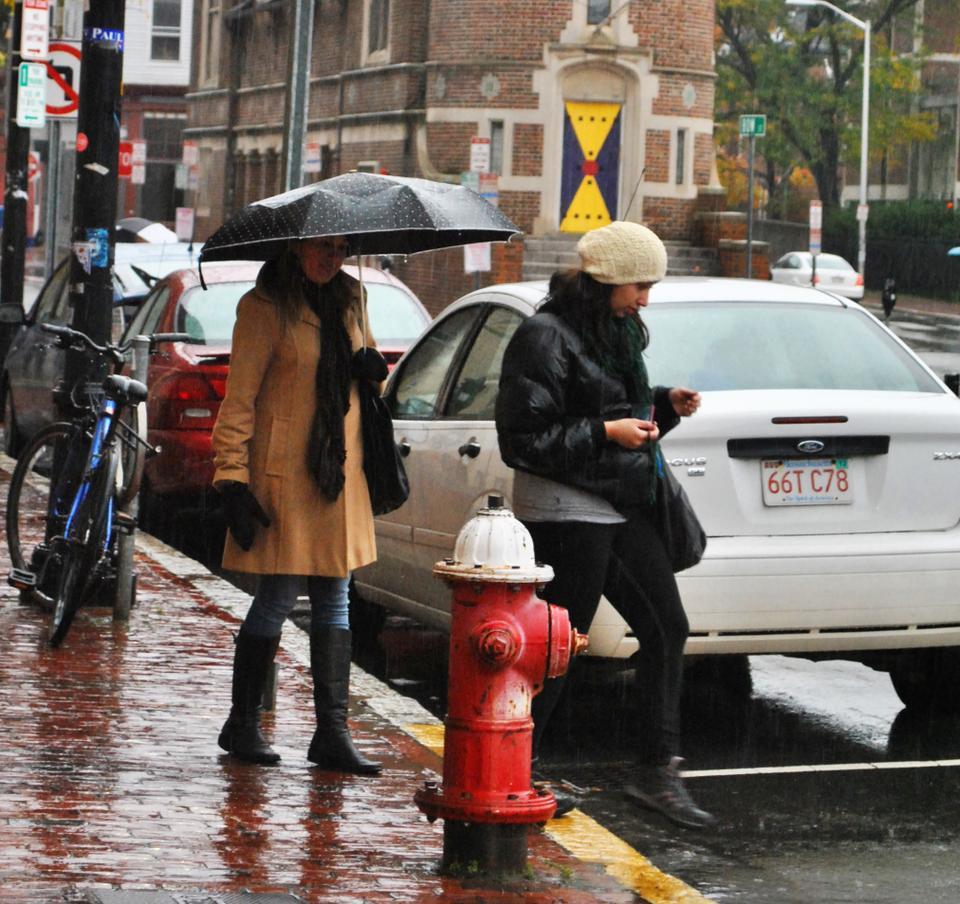
Makin' It Rain
We’ve all wanted to control the weather at some point. Man may have traveled to the moon, decoded the human genome, and beaten the smallpox virus, but a little rain is all it takes to spoil a picnic, a hairdo, or the Head of the Charles.
A Harvard physics professor named Emory Leon Chaffee 1911 actually tried to do something about it in the 1920s. Chaffee was responsible for “the earliest truly scientific efforts to induce artificial precipitation in this country,” James E. McDonald, then senior physicist at the University of Arizona, wrote in a letter to the professor.
Chaffee knew he wanted to become a scientist from a very young age, according to a 1964 interview recorded by the American Institute of Physics. Though Chaffee, a native of nearby Somerville, Mass., did not come from an academic family—his father was a pharmacist—he became interested in engineering and science “way back in grammar school.”
Having “always planned to go to MIT,” Chaffee matriculated at the school to study electrical engineering. He soon began to feel, however, that he was stuck at the wrong college, studying the wrong discipline.
“I had a growing feeling that was not what I wanted, that I really wanted to study the fundamentals of science, and particularly of physics,” Chaffee said in the AIP interview. “So, there was no question about what I should do. I was just waiting to get through with the MIT course so that I could go to Harvard.”
After graduating from MIT, Chaffee traveled down Massachusetts Ave. in search of these fundamentals. While studying graduate physics at Harvard, he conducted thesis work that led to the discovery of a novel method for producing long-distance telephone transmissions. Today, it bears his name: the “Chaffee Gap.”
Yet Chaffee’s interests would soon reach greater heights. After graduating and joining Harvard’s faculty—where he would eventually become chairman of the Department of Engineering Sciences and Applied Physics—he had a moment of inspiration while chatting with a visiting acquaintance, Luke F. Warren, in Harvard Square in 1921. Offhand, Warren wondered aloud whether it would be possible to dissipate or coalesce clouds by peppering them with electrically charged particles.
Chaffee was struck by the notion, and started working privately on the problem. He soon designed a mechanism to test the idea, inventing and patenting a nozzle containing two cones: an outer, rotating cone and an inner, stationary one. The plan was to place sand in the inner cone and charge it by spinning the outer cone at more than 1,000 revolutions per minute before using the nozzle to spray the now-charged sand particles into the atmosphere.
With the mechanistic details finalized, Chaffee contacted the U.S. Army for help with testing the invention. The army agreed to provide two small World War I fighter planes and allowed Chaffee to use an air force base in Aberdeen, Md. as a test site.
The only obstacle was Warren. After hearing of Chaffee’s work, he’d decided to patent his own cloud modification system. The two scientists’ weather war didn’t make it past the lower atmosphere—it soon emerged that Warren’s application drawings were essentially flawed reproductions of the ones Chaffee had sent him. The ever-modest Chaffee, however, wrote the patent office petitioning to give Warren most of the official patent credit. He only wanted recognition for his nozzle.
In the fall of 1924, Chaffee officially launched his mission to control the weather. The fighter planes, outfitted with the professor’s newly patented sand-spinning machine, flew back and forth above the clouds, spewing waves of charged sand. Yet while Chaffee’s technique seemed to have some effect on cloud formation, he wasn’t able to prove clear causation.
Before more conclusive testing could be done, President Calvin Coolidge shut down the program just two months after its inception. In an explanatory letter sent to Chaffee, the president wrote that “$15,000 [was] too much to spend on such experimentation.”
Chaffee may not have been too upset. He had warned his team at the start that they were unlikely to reach any definitive conclusions.
The nature of the experiment, after all, left everything a little up in the air.


